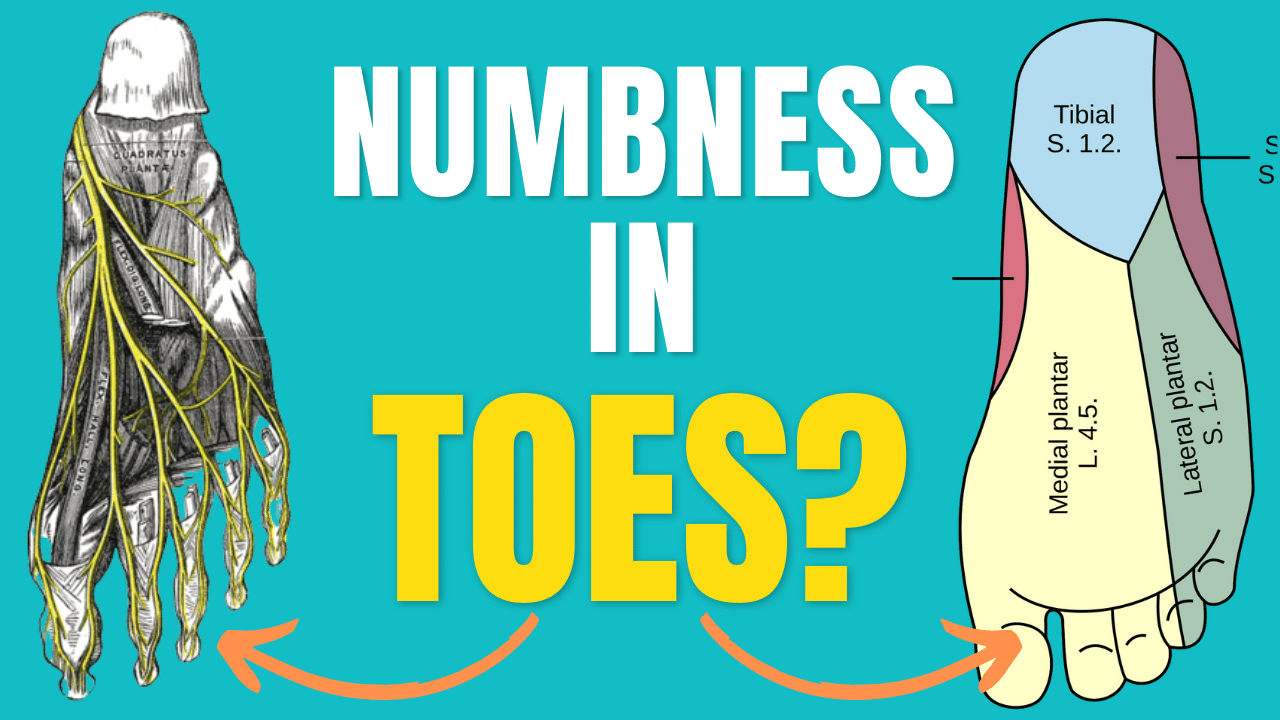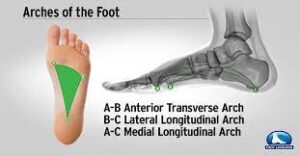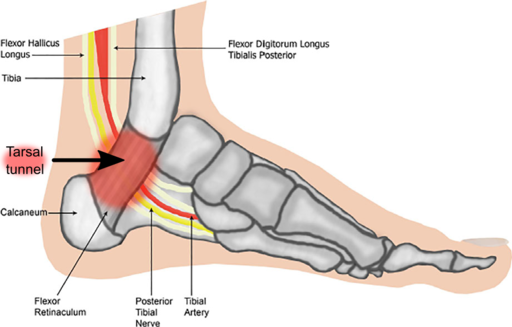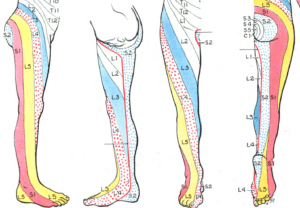Do You Get Numbness In The Toes?
In this post, you'll learn 5 causes of numbness in toes, and how to treat numbness in toes.
Causes Of Numbness In Toes
If you get numbness in your toes, you may worry if it's something serious. Furthermore, will it go away on it's own, or will you need to seek out treatment for the numbness in your toes.
Most of the time, numbness in the toes isn't serious, but it is a sign that you should figure out what's causing the numbness in your toes so that you can get rid of it.
The most common causes of numbness in toes are:
- Diabetic Neuropathy
- Plantar nerve compression
- Tarsal tunnel syndrome (tibial neuropathy)
- Sciatic nerve irritation
- Pinched nerves in the lower back
Diabetic Neuropathy
Diabetic neuropathy is the most common cause of numbness in the toes, especially if you:
- have numbness in the toes of both your left foot and right foot
- have numbness in your toes but not in your lower leg and foot
Diabetes mellitus is when your blood sugar gets too high. Persistently high blood sugar can damage the small blood vessels that supply your nerves, causing nerve damage or neuropathy.
Diabetic neuropathy is most often causes symptoms in the small nerves in your hands and feet. This pattern of numbness is referred to as a "stocking and glove" pattern due to the location of symptoms.
Therefore, diabetes can cause numbness in the toes and fingers.
How to treat numbness in toes from diabetes
If high blood sugar is the cause of the numbness in your toes, then the treatment is getting your blood sugar under control.
Diet and exercise are the key components of controlling diabetes. Medicines such as metformin or, in severe cases, insulin can also help control blood sugar.
However, if you have type 2 diabetes, proper diet and exercise will limit the amount of medication you need to take, or possibly eliminate the need for medicines all together.
Diabetic diet for numbness in toes
In general, try cutting down on C.R.A.P. foods such as:
- Carbonated beverages
- Refined sugars and flours
- Artificial flavors and colors
- Processed foods
and eating more G.L.O.W. foods:
- Green, leafy vegetable
- Lean proteins
- Omega-3 fatty acids
- Water
Exercise for diabetic neuropathy
Ideally, you want to aim for 30-minutes of physical activity on at least 5 days per week. Mostly this should be aerobic exercise such as waking, biking, swimming, or running.
If you're just starting out and can't exercise for 30 minutes straight, that's OK.
Just start with what you can do. Perhaps you start taking three 5-minute walks per day.
The key point is gradually increasing your activity level over time.
When you exercise, it burns glucose as energy and increases insulin sensitivity (meaning that the insulin that you do produce works better).
Plantar Nerve Compression
As you can see from the image above, your medial and lateral plantar nerves start from the inside of your ankle and run underneath the bottom (plantar) surface of the foot. Compression of these nerves can cause numbness in the toes.
There are several causes of plantar nerve compression.
One cause is wearing shoes that are too tight. This squeeze your toes together and can compress your plantar nerves. This compression often occurs between the 3rd and 4th metatarsal of the foot where the medial and the lateral plantar nerves joint together.
This condition, known as Morton's neuroma, is one common cause of tingling in the toes.
How to treat numbness in toes from plantar nerve compression
Wearing shoes with a wider toe box can help tingling in the toes from Morton's neuroma.
Overpronating when walking can also compress the plantar nerves. Your foot has 3 arches:
- medial arch
- lateral arch
- transverse arch
If any one of these arches drops, it can put pressure on the medial and / or lateral plantar nerve causing numbness in the toes.
Wearing orthotics or insoles can help prevent your arches from falling as well as keep you from overpronating.
Overpronating means allowing your foot to flatten too much when walking. This can cause plantar fasciitis, or tarsal tunnel syndrome.
Tarsal Tunnel Syndrome
The medial and lateral plantar nerves discussed above are both branches of the tibial nerve.
The tibial nerve runs down the calf along the inside of the ankle though an area referred to as the tarsal tunnel.
Overpronating when walking or running can irritate this nerve at the ankle as well as at it's plantar nerve branches. This is known as tarsal tunnel syndrome.
How to treat numbness in toes from tarsal tunnel syndrome
Exercises such as foot strengthening and balance exercises and calf stretches can help prevent overpronation.
Additionally weak hip muscles can contribute to overpronation, so strengthening your hip muscles can help tarsal tunnel syndrome as well.
Sciatic Nerve Irritation
Moving upward from the tibial nerve, your tibial nerve is a branch of your sciatic nerve.
The sciatic nerve can get compressed in the buttock from sitting too long, sitting in asymmetrical positions, or from the piriformis muscle.
Piriformis syndrome is when your sciatic nerve gets compressed at the hip. This usually causes pain in the leg, but it can cause numbness and tingling in the lower leg and toes as well.
Your sciatica nerve can get compressed if your piriformis is too stiff and short.
However, your sciatic nerve can also get irritated if the muscles on the outside of your hip (hip abductors) are too weak. This causes the piriformis to get stretch over the sciatic nerve and irritate it every time your take a step.
How to treat numbness in toes from sciatic nerve compression
If your piriformis is too short and stiff, stretching it can help. However, if your piriformis is compressing your sciatic nerve because it's too lengthened, then stretching it further could make the tingling in your toes worse.
Pinched Nerve In Lower Back
Moving even farther up, the sciatic nerve is formed from the nerve roots of the L4, L5, S1, and S2 nerves.
These nerve roots come from your lower back, and each of them has its own pattern of pain, numbness, and weakness.
The L4 nerve root (white with red dots in the image below) refers symptoms down the inside of the lower leg (shin) and foot as well as the big toe.
The L5 nerve root (yellow region in photo) can cause pain, numbness, and tingling in the buttock, and toes 2, 3, and 4.
The S1 and S2 nerve roots causes symptoms in the outer lower leg and the outside of the foot and the little toe.
As you can see, the L4 and L5 nerve roots supply the medial plantar nerve, and the S1 and S2 nerves make up the lateral plantar nerves, so it's easy to understand how these nerve roots can cause numbness in the toes.
There are lots of things that can cause pinched nerves in the lower back, but herniated discs and spinal stenosis are two common problems.
If you've ruled out diabetes as a cause of the numbness in your toes, then the lower back is the next most likely place you'll encounter a problem.
Need Treatment For Numbness In Your Toes?
If you've tried some of the tips in this post and you still can't decide how to get rid of the numbness in your toes, we'd be happy to help you figure it out.
Just tap the button below to request an appointment with one of ours specialists.
Like this post? Here are a few others you may enjoy:
Numbness And Tingling In Lower Leg And Foot






